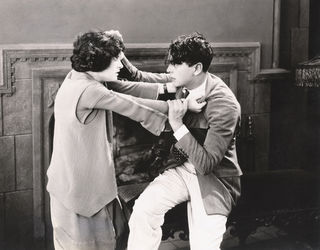Marriage
The Marital Fight That Never Ends
Is there one in your marriage? Here is one way to solve it.
Posted September 29, 2017

The Walker home was abuzz with excitement as friends, family, and neighbors showed up to celebrate the Walker’s 70th anniversary. Everyone seemed to know that the elderly couple was as much in love today as they were when they first got married back in 1947. Even the mayor and news reporters showed up to celebrate. When the festivities finally came to a close and the hugs, good-byes and the photo ops were over, a reporter approached the couple and said “I have to ask you both something. I am struggling a little in my own marriage and I was wondering what are the ingredients of a good marriage. Obviously, you have a great marriage. So, what is your secret?” After a moment, Mr. Walker thoughtfully said “Well, we’ve been married now for seventy years. And we’ve only had one fight.” The reporter was aghast. “One fight? One fight in seventy years? That’s amazing! How did you manage to have just one fight in seventy years,” he asked? Mrs. Walker smiled at her husband and said, “What he didn’t tell you was that it was the same fight for seventy years!”
Ah yes, the fight that never seems to end. The one that pushes every couple to the brink of insanity and the steps of divorce court. The fact of the matter is that most couples have at least one unresolved issue in their relationship that they fight over continuously. Marriage Guru John Gottman claims all couples will have perpetual problems, some of which may never be resolved throughout the lifespan of the marriage. Although the problem may take many forms, the root of the problem is usually the same. For instance, a couple might argue over sex, money and in-laws while not recognizing that the argument is really about who controls these things. These problems seem to fester – often throughout the duration of the relationship—and can drive the couple apart; indeed, even to the point of a bitter divorce.
One of the principle reasons certain perpetual problems persist in relationships is that most people are quite good at seeing how their partner is causing problems, yet not so much themselves. As one of my mentors used to say “You cannot NOT be part of a problem between two people. Both people are responsible.” Also unknown to many couples is that they can actually make a problem worse while trying to fix it (!!). Their efforts to fix things may be in reality pouring more gasoline on the fire. This creates what psychologists call a “vicious cycle”.
In a vicious cycle, each person in the relationship tries to fix a particular problem only to make it worse; yet they only see their partner as the one making things worse and not themselves. As the name implies, vicious cycles spin around and around in an endless and hurtful feedback loop which never seems to end.
One of the most common and destructive vicious cycles is one that is referred to as a “distance-pursuit” vicious cycle. Here, one of the partners wishes to be closer to the other and spend more intimate time with their partner. They want to talk more, touch more, make love more or do more things together more often than their spouse does. It is important to note here that the desire for together time normally differs for each person in the relationship. Some people want to share time with their partners 90% of the time, for example, while others may only prefer 40% of the time. These variations in desire for closeness are different for everyone. There is no right or wrong amount; just differences.
In a distance-pursuit cycle, the person wanting more intimacy “pursues” the other and makes frequent requests for together time. If their spouse “distances” themselves by rejecting these offers, the pursuer will try even harder to get closer which only pushes their partner even further away as they attempt to control the level of closeness back to a level in which they are comfortable. This cycle repeats itself over and over until things spin out of control with both partners believing they are fixing things when they really are making things worse.
Here is an example of a distance-pursuit vicious cycle: Teresa was brought up in a large family that “did everything together”. Evenings were a special time when mom, dad and kids came together over a meal excitedly talking to each other about the events of their day. Teresa assumed Jack was like this when she met him but Jack’s family coveted alone time when they came home from school or work with his sister’s going to their rooms to do homework and their dad going into his garage to work on his latest project while mom read on the front porch. Meals were taken separately except for weekends which were designated as “family time” where the whole family spent the day together involved in some mutual activity.
Both Jack and Teresa made the mistake of assuming their respective family’s daily routine was the correct one. So when Jack would come home, say a quick hello and go into his garage to work on his latest project, Teresa was naturally upset.
Teresa: We’ve been apart all day. Don’t you want to be together? Are you upset with me?
Jack: No.
Teresa: Then why don’t you want to be with me? You never want to be with me.
Jack: Who said I don’t want to be with you? What is going on with you?
Teresa: (angrily) I want a husband who actually loves me!
Jack: You know what Teresa? I’m sick of fighting with you about this! I don’t want to fight any more, just leave me alone.
Jack walks away from Teresa, retreating to the garage. She follows him.
Teresa: Jack, I just want you to love me. Can’t you just hold me for once? Can’t we just make love?
Jack: You’re so needy and clingy! I just need time to be alone that’s all. Must you always be up my butt?
The first reaction of my readers might be to side with Jack or with Teresa; they are both responsible. If Jack wouldn’t back off so much Teresa would not pursue so much. But if Teresa wouldn’t pursue so much Jack wouldn’t back off so much.
Negotiating and regulating distance is something every couple needs to do intentionally. As I mentioned before, there is no right or no wrong. The mistake both Jack and Teresa are making is that they both assume that their level of need for closeness is the default in the marriage. In other words, they falsely assume that the amount of togetherness that they need is the “norm” and that every person needs the same amount of togetherness as they do. If both Jack and Teresa would acknowledge and accept that they are different they would be able to negotiate these differences but their problem is that they falsely assume they’re the same so they fight over their differences.
This begs the question, “So how does one resolve a distance-pursuit issue?” Here are some suggestions. To begin, it is essential that breaking the distance-pursuit problem would mean an acceptance that the other’s desire for closeness is not defective to their own. It is simply different. Marriage begins with differences and differences should be embraced. What is “close” for one party might actually be distant for another. Watching television together is a good example of this. Some people consider it together time while others do not.
Secondly, a good solution should include opening a dialogue regarding together time. How much time would each one like to be together during a typical week and how much time apart? What together things and alone things would the week include and what time of the week would these things occur? This dialogue should openly acknowledge that both spouses need different amounts of separate/alone time as well as different amounts of together time. I have even suggested to couples that they use weekly planners to schedule and prioritize these times as couples can be quite busy these days.
Finally, I suggest to all my couples that they need to create more opportunities for being together; some things they have never done before. Indeed, this is truly a creative act because they are making something that has never before existed in their lives. In my own marriage, for example, I found that my wife loved riding on the back of my motorcycle, something I never thought she would like. I loved it and she did as well. There are literally thousands of things you could create to spend quality time together from running a business together to making wine together and everything in between. The number of things that couples can do are endless! We live in America, right? Think of all the opportunities!
And finally, from time to time, don’t forget to throw in what I call “The Secret Gift." This is difficult to do sometimes but is worth its weight in gold. Here’s how it would work. Jack might reason to himself: “I love my wife she is wonderful. I would give her $1 million if I had it and would probably take a bullet for her if I had to. But I don’t have $1 million. And I don’t want to get shot. How about I just talk to her when I come through the door, that is what she really wants. I’ll surprise her by just doing it without telling her.” Or Teresa could reason “My husband is wonderful and he really loves me. I would do anything for him just to make him happy. But what he really wants to some alone time when he gets home. I think he would value that more than any other gift I could give him. So that’s what I’m going to do. I’m not even going to talk about it. I’m just going to do it!”
In closing, we must recognize that some reasons for being the distancer or the pursuer are much deeper and can be signs of a dysfunctional relationship pattern or a psychological disorder. In that case, the couple might need professional help.
And guess what? There are other types of vicious cycles as well. Tune into my next blog to learn what they are.




